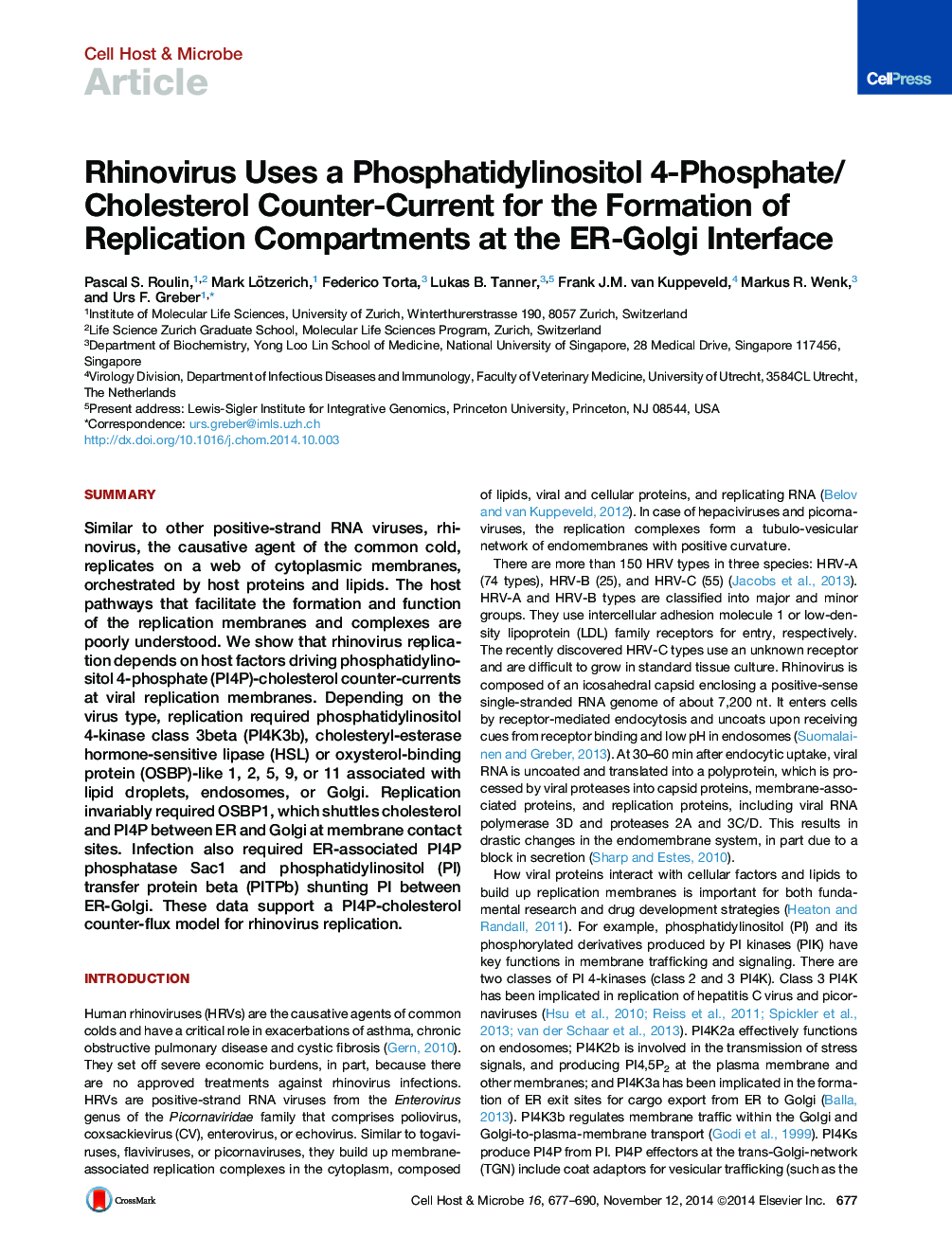| Article ID | Journal | Published Year | Pages | File Type |
|---|---|---|---|---|
| 4361034 | Cell Host & Microbe | 2014 | 14 Pages |
•Lipid kinase PI4K3b is enriched at rhinovirus replication sites and supports replication•Lipid droplet-derived cholesterol is enriched on rhinovirus (HRV) replication sites•Oxysterol-binding protein 1 (OSBP1) broadly supports enterovirus infections•Fueled by storage cholesterol, the PI4K3b-OSBP1-Sac1-PITPb cycle drives HRV replication
SummarySimilar to other positive-strand RNA viruses, rhinovirus, the causative agent of the common cold, replicates on a web of cytoplasmic membranes, orchestrated by host proteins and lipids. The host pathways that facilitate the formation and function of the replication membranes and complexes are poorly understood. We show that rhinovirus replication depends on host factors driving phosphatidylinositol 4-phosphate (PI4P)-cholesterol counter-currents at viral replication membranes. Depending on the virus type, replication required phosphatidylinositol 4-kinase class 3beta (PI4K3b), cholesteryl-esterase hormone-sensitive lipase (HSL) or oxysterol-binding protein (OSBP)-like 1, 2, 5, 9, or 11 associated with lipid droplets, endosomes, or Golgi. Replication invariably required OSBP1, which shuttles cholesterol and PI4P between ER and Golgi at membrane contact sites. Infection also required ER-associated PI4P phosphatase Sac1 and phosphatidylinositol (PI) transfer protein beta (PITPb) shunting PI between ER-Golgi. These data support a PI4P-cholesterol counter-flux model for rhinovirus replication.
Graphical AbstractFigure optionsDownload full-size imageDownload high-quality image (340 K)Download as PowerPoint slide
